“The whole ceremony was very *you*” Part 3: Amour Libre
Here comes the first scandal! Liberté, the third act of the Paris 2024 Opening Ceremony, combined two very Parisian activities: overthrowing tyrants, and falling in love. Also, a secret title!
Revolutionary mashups
Like the previous ones, this act started nice and easy for global audiences, with an international favourite. From the Théâtre du Châtelet rooftop (an iconic venue for musicals in Paris), the Torchbearer parkoured his way down to the stage, passing through a rehearsal of Les Misérables. In France, Victor Hugo’s novel is culturally much more important than its musical adaptation. Other francophone musicals like Starmania (Tycoon, recreated by opening ceremony artistic director Thomas Jolly and musical director Victor Le Masle in 2022) or Notre-Dame de Paris (also based on a Victor Hugo novel) are much better known by French audiences than Les Miz. More generally, musicals aren’t as big of an art form in Paris as, say, London or New York. So this one is really to ease international audiences in: “we’re gonna talk about revolutions, but we’ll start slow with a piece you may know and like”. As Théâtre du Châtelet will run a new production of Les Misérables later this year, this scene also constitutes the first product placement of the act.
The barricade refers to the short-lived, early June 1832 Republican insurrection in Paris. But visually, it recreates a famous painting by Delacroix, La Liberté guidant le peuple (Liberty guiding the people), which represents an earlier revolution, les Trois Glorieuses, i.e. the three glorious days of 27-28-29 July 1830.
Les Trois Glorieuses are much more important, because they successfully stopped King Charles X’s attempt to reinstate absolute monarchy in France. They brought the more moderate King Louis-Philippe on the throne of the so called July Monarchy, i.e. one of the few times when France had a somewhat stable constitutional monarchy. These events are commemorated on Place de la Bastille, at the site where an infamous prison once stood before the earlier —and more famous— 1789 French revolution tore it down. Place de la Bastille is also a site where, to this day, French police keeps trying to hide the fact that poor Parisians still exist during the Olympics:
This latest event once again confirms the words of French comedian Pierre Desproges:
“The Bastille was nearly empty when a bunch of hotheads valiantly stormed it on a summer day in July 1789. This was the bourgeois revolution. They are still in power”
You can still see the 1830 dates on the July Column, whose lower levels can be visited again after… you guessed it, recent renovations!
La Liberté guidant le peuple was also very recently restored by the Louvre museum: after the Notre-Dame scene in Synchronicité, this opening scene of Liberté is a way for France to once again advertise its attachment to historical works of art, and to the skills of its artisans. The painting’s restoration process uncovered, among other things, many plumes of smoke from shots fired from the windows of an unknown building not far from Notre-Dame. In the ceremony’s Les Misérables stage shot, the building is clearly the Conciergerie, located not far from Notre-Dame either. Which leads us to the first international scandal of the evening.
La concierge rit
The scene opens with a beheaded woman in a cartoonish 18th century outfit, holding her own head in her hands, a capella singing the French revolutionary classic: “Ah! ça ira (x3) / Les aristocrates à la lanterne / Ah! ça ira (x3) / Les aristocrates on les pendra”, meaning roughly “It’ll be OK, we’ll hang aristocrats from lampposts”. You’ll notice no guillotine is mentioned in this 1790 song, because it would take a few more years before its wider deployment in France. The woman’s accent is a strong mid-20th century Parisian working class accent, i.e. it is neither an 18th century noblewoman accent nor a modern-day youth accent from the banlieues. It’s something closer to the Edith Piaf generation, confirmed seconds later when opera singer and metalhead Marina Viotti appears on a giant boat cutout representing Paris’ coat of arms, fist raised, in an outfit similar to Piaf’s in the 1953 film Si Versailles m’était conté, where she sings “Ah! ça ira” at the gates of Versailles, fist raised at the nobles:
Sure, you can think Viotti just looks like a pirate, but this a symbol of a defiant, revolutionary Paris, and the second -but not the last- reference to Edith Piaf in this ceremony.
The moving coat of arms clearly establishes that this show is now about Paris, not about Versailles, and not about all of France’s other regions either. It also clarifies that we will talk about the past, first reminding people of the famous lyrics (which are about to get much less intelligible), but this scene is also about the recent common people of Paris, not fancy old timey nobles. Marie-Antoinette was indeed jailed at the Conciergerie, before being beheaded on Place the la Concorde (where BMX and skateboarding Olympic events are taking place). Between the genuine historical location and the fact that she actually enjoyed playing the original tune that inspired the song on her harpsichord (before it got a revolutionary cover) this image is indeed a nod to the former queen of France. But the focus shifts very quickly away from her, and away from any attempt at accurate historical re-enactment. The props & makeup are outrageous, reminiscent of the Parisian tradition of grand guignol, a lowbrow, gory type of popular theatre, filled with gruesome but tongue-in-cheek special effects.
The camera pans out to reveal many other beheaded noblewomen (several played by male actors, again from the awesome Compagnie Retouramont from Synchronicité), so it’s really more about nobility in general: the entire top of the bank is lined with beheaded mannequins, in black dresses instead of red. The main aim of the French Revolution was to get rid of nobility as a ruling class, not as individuals: even though the French had voiced their concerns in writing, in the cahiers de doléances petition notebooks, nobles refused to listen to them, to share power, or even accept a 5% tax rate. So they had to go. Two things have been consistent about the French elite, from the Ancien Régime to our current Republic:
their refusal to listen to the people (the Yellow Vests protesters also wrote cahiers de doléances to President Emmanuel Macron -and he also ignored them)
their refusal to let go of power (Macron still refuses to name a prime minister from the Nouveau Front Populaire Left coalition, even though the coalition came first in the parliamentary elections thanks to #EwoksDeLaRepublique. So his ministers who should be replaced but were elected as MPs in the meantime, now are staying around in both roles, happily trampling the separation between executive and legislative powers. It’s unethical but it is legal, because the current constitution of our Fifth Republic was tailor-made for another man with autocratic tendencies: General Charles de Gaulle.
Even the original 1930s Front Populaire Left Alliance was not listening to the people enough, and it took major strikes for this supposedly worker-friendly government to implement a whopping two weeks of paid vacations in 1936.
Marie who?
The camera zoomed out to take in the entire Conciergerie building and the giant, shiny, moving Paris coat of arms, then focused on the performers, confirming that the French have bigger fish to fry than Marie-Antoinette. Yes, the Sofia Coppola film that rebranded her as a relatable nepo baby with killer playlists was a success in France too. Yes, French network Canal+ has recently co-produced a series about Marie-Antoinette, partially shot in Vaux-le-Vicomte castle (incidentally also where the ceremony’s fireworks were tested).
But we have so many other queens. And if you want a true badass, who also came to France from abroad, and also faced vicious court intrigue and violent regime change, try Marie de Médicis.
Instead of commissioning an entire fake village to larp being a farmer in Versailles like Marie-Antoinette did, Marie de Médicis commissioned an aqueduc to fuel fountains in her Luxembourg gardens, which actually proved useful for poor Parisians as it brought fresh water to downtown Paris (I show you this aqueduct here).
The French Revolution has been portrayed extremely differently in the francophone and anglophone worlds. While the French did print defamatory caricatures about nobles for a few years, England pushed propaganda portraying French nobles as innocent martyrs (and French revolutionaries as a bloodthirsty maniacs) for way longer. Add to that the fact that English replaced French as a universal language, and that American soft power was built upon English-speaking cultural references, and you get 250 years of worldwide royalist bias. If you can read French, you have access to 250 years of much more nuanced portrayals of the French Revolution.
We do have a few leftover royalists in France, usually on the far right of the political spectrum, combining their nostalgia for hereditary dictatorships with xenophobia / homophobia / antisemitism / racism / catholic fundamentalism depending on each subgroup. For example Macron’s current Interior Minister, in charge of police (hence of kicking poor people out of Paris, of turning the banks into a no man’s land and of the bouquinistes fiasco) does not identify as royalist, but he did write articles for a newspaper of the far-right royalist group Action Française, and he did march against marriage equality. So much for the supposed “centrism” of the Macron administration.
But for many French people, it’s a recognized fact that, instead of trying to work a bit or invest in factories like their English counterparts, French nobles stuck to profiting from agriculture, and too bad for “their” French peasants if harvests were terrible: commoners still had to pay crippling taxes to the nobles. It was not just about money: you could get executed for daring to hunt on your lord’s land. Even Marie-Antoinette was no feeble-minded fashionista who only cared about her Swedish lover. She supported the plot to betray her own subjects, by trying to combine French royalist troops with the Austrian army to attack the French people. Anything to cling to power, even high treason.
If you live in a constitutional monarchy, where, at some point, the nobility agreed to be controlled by the people in exchange for keeping their ample estates and prancing around in palaces paid by the people’s taxes, you may find monarchies rather harmless. Trust me, we tried to get one of those. We asked nicely. That didn’t work. Also, unlike for American colonists, our kings were not a long sail away, across an ocean. They were right there, with thousands of soldiers ready to quell any revolt, in Paris, at a moment’s notice. As you saw earlier, we had to do a few extra revolutions throughout the 1800s to finally get rid of monarchs. We also tried to kick the bourgeoisie out of power in 1871:
But as Desproges wrote above, they are sadly still in power, more on this in the upcoming Sororité act of the ceremony.
To be fair, many of us felt a mix of awe and laughter seeing explosions and grand guignol in an official ceremony. Even French metal band Gojira, who did not know about the actual stage design, were happily surprised in a “Wow! OK, this is indeed pretty metal!” kind of way. Funnily enough, the Conciergerie’s facade was also very well cleaned up during recent renovations, so it looked nearly fake, similar to the type of medieval fantasy decor used in metal festivals like France’s Hellfest. This made the platforms that Gojira members were playing on blend very well with the historical sandstone. Musicians were actually strapped to the building, because the rain made these platforms slippery. But in France, really, only the far-right got offended. The only left-wing leader to comment negatively was Jean-Luc Mélenchon, who often gives the impression of running his La France Insoumise party like an absolute monarch. Maybe he felt called out?
People got the religious nods wrong -again
Accusations of Satanism just show a lack of knowledge about French societal values. First, France is a secular Republic (more on this later), and while it has had a significant Christian past, most people do not actually go to church or even care about god at all, so the devil is really the least of their worries. Flamethrowers and smoke machines were not there for a satanic ritual, but as a nod to historical events: we do tend to burn palaces during revolutions. If you can see the Olympic cauldron/balloon that well every night, it’s because an entire wing of the Louvre, the Palais des Tuileries, was burned down in 1871:
The red streamers only confirmed that the French Revolution was a violent affair indeed: blood was spilled as part of normal fights and executions; by people who often were devout Christians at the time, not by Satanists.
The only clear religious connotations in this scene are actually in lyrics that say “mea culpa” and in the fact that the noblewoman is holding her head like Saint Denis, the first bishop of Paris.

According to legend, he was beheaded by Romans in Montmartre (where the bike races were both open to Parisians and pretty epic, see third clip below)
and then he walked all the way to Saint-Denis (the northern suburb where the main stadium and Olympic village are located) carrying his own head. There was a very hidden nod to Saint Denis with Notre-Dame’s rooster in act 2 , but this one is the most blatant, and there will be another hidden nod in another scandalous act.
If you’re a royalist, you could see Gojira singing “mea culpa” (“it’s my fault”) as apologizing for the beheading of Marie-Antoinette, and her portraying as a saint, a new Saint Denis. But if you’re a historian, you’ll know some of the song’s lyrics include “aristocrats say mea culpa”, i.e. the aristocrats apologizing to the people, not the opposite.
Another sign there is no Satanic intent is the use of red streamers instead of say, fake blood. Not only does it encourage everyone to take the events with a bit of humor, but it’s a great way to avoid damaging the historical building. As a bonus, streamers clung to the ship and the singer: Paris was bloody, shaken but she took the gore with her, and started singing very positive messages without trying to hide what just happened.
This in-your-face humour, over-the-top pyrotechnics and shiny sailboat confirmed the connection with the 1989 French Revolution bicentennial ceremony I was starting to feel due to the previous 1980s-inspired scenes. In 1989, the ceremony was criticized for glossing over the Reign of Terror, and its thousands of executions. In 2024, not only did the creative team not shy away from it, but they embraced its spectacular aspect.
For an intermediate take that shows how comfortable French people are with portraying the execution of absolute monarchs during the French Revolution, see this photo from a 2019 show by Groupe F, about Marie-Antoinette. It was performed inside the Versailles Orangerie gardens, and narrated by famous royalist presenter Stéphane Bern:
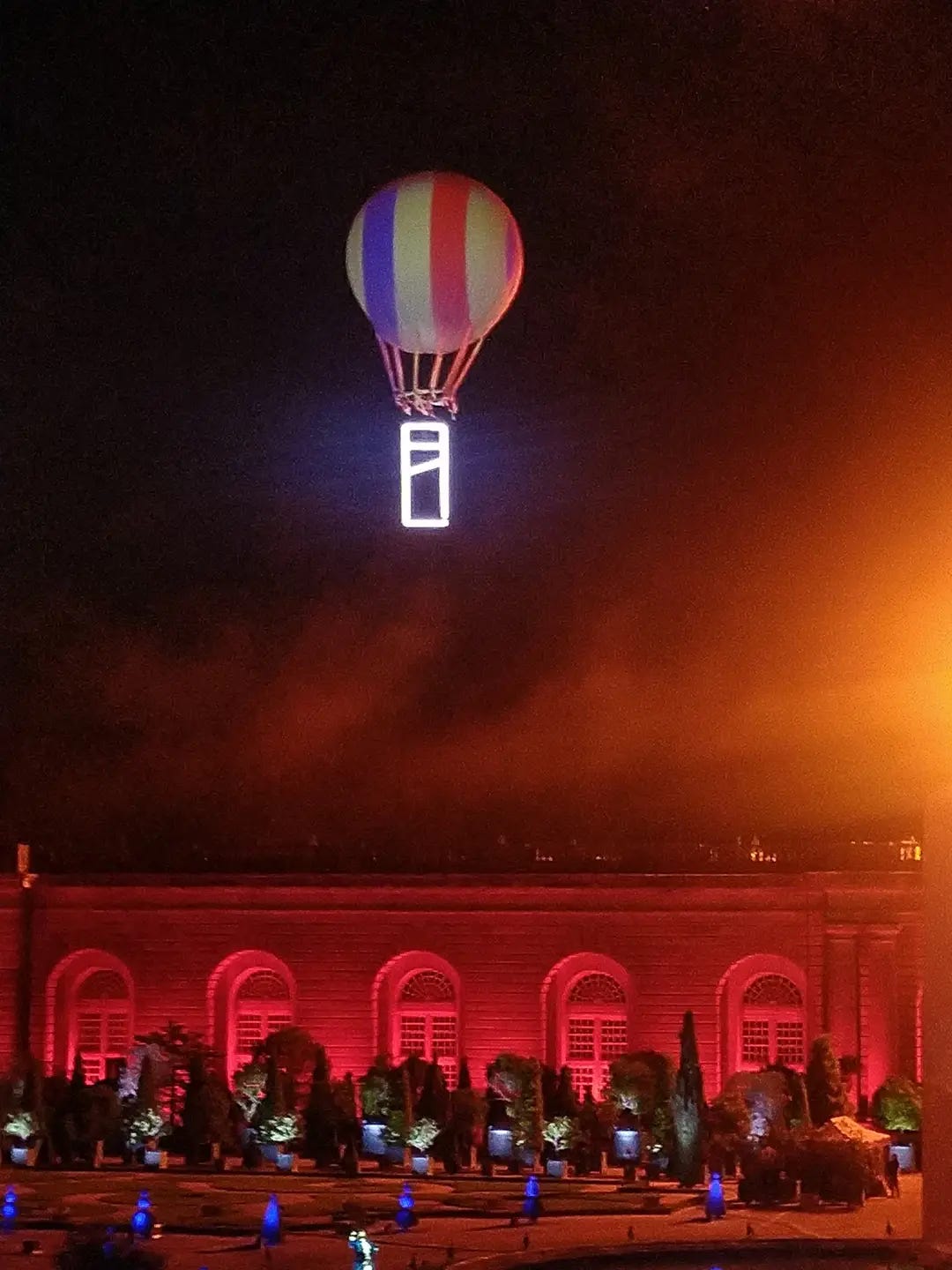
The Opening Ceremony creators also managed to evoke killings that did happen, but without glorifying violence either: instead of repeating the lyrics about hanging nobles from lampposts, they focused on other lyrics.
Some of these lyrics include both French and English “Ah! Ça ira, réjouis-toi / Ah! Ça ira, le bon temps viendra / Ah! Ça ira, mea culpa / Let's rejoice, good times will come / Without fear for fire or flame! No! / Ah! Ça ira! ” This positive message, sang on and around the heraldic boat, makes a direct connection to Paris’ motto, written in Latin under its coat of arms: Fluctuat Nec Mergitur ("[she] is rocked [by the waves], but does not sink").
This motto is old, but became a recent symbol of resistance after the 2015 terrorist attacks, even being sprayed around town by graffiti artists.
During the ceremony, this motto appeared on the first bridge, the Pont d’Austerlitz, along with Citius, Altius, Fortius – Communiter the Olympic motto. It shows Paris can endure difficult times, be rocked, shaken, but will endure. Things will get better. Which can also be translated as… “Ça ira”.
The secret title
When the panel saying “Ça ira” showed up, as the Torchbearer and kids’ boat disappeared from the Canal Saint-Martin into the light (and emerged from the light under that very first Pont d’Austerlitz), I thought it was one of the many editing mistakes made by the IOC TV director.
I thought there would be a revolutionary scene later on, called “Ça ira”, and that the scene title was shown too early. But I was wrong! The entire show was called “Ça ira”, i.e. the entire show was going to be revolutionary, and carry the positive message that things would get better, eventually. The French are famous for complaining about everything, and being pessimistic in general. And after years of Macron’s economic policies hurting the poor, security policies maiming unprecedented numbers of peaceful protesters, reneging on promises about women’s rights and about climate change, political tactics enabling the rise of the Far Right, worsening oppression of migrants, pandering to the worst hate speech in years… we were being told by the creative team that things would get better. Just not before the ceremony.
The official title, announced throughout the French press and even the IOC was La Seine olympique (the Olympic Seine, also a play on words with La scène Olympique, the Olympic stage). As the Seine was being used as a stage, it made perfect sense, and the French sure love a pun. This title was yet another way to make everyone lower their guard. Only revealing “Ça ira” at the very beginning of the ceremony was a very smart trick to hide its revolutionary intentions, and therefore avoid controversies —or attempts at censorship— before the show.
For history buffs, the phrase “Ça ira!” even connects Paris to an earlier revolution, where both French ideals and soldiers played a key role: the American Revolution. Ben Franklin, as official envoy to Paris, would often get asked how the Revolutionary War against England was going. His French wasn’t great, and the military situation was often dire, but he would always reply “Ça ira, ça ira”. I.e. “we’re going through tough times but we’ll hang in there and eventually defeat the king’s troops”. He said it so often that it became an 18th century meme, then the chorus of this song… and finally the secret title of the Paris 2024 Olympics opening ceremony!
Anatomy of Parisian love
As the magenta-red smoke cleared from the façade of the Conciergerie, the singer switched to the iconic Habanera aria from Bizet’s Carmen. She’s a strong, hot-tempered woman, a free lover, the perfect transition from violent revolution to passionate love “If you don’t love me I love you / But if you love me beware!” The Paris boat started to move towards Place Dauphine, nicknamed “Paris’ sex” by surrealist author André Breton, because of its a triangular shape between the two watery legs of the Seine. In the same direction, the boat also went towards Square du Vert-Galant, whose name literally refers to king Henry IV’s sexual prowess, and whose current elongated shape could also be seen as a phallus entering the wet Seine. An additional bit of magenta-red smoke then suddenly appeared in the Parisian sky, just above Place Dauphine and Square du Vert-Galant, forming a heart. At that very moment, I was on the other site of town retreating towards my hotel, and fighter jets suddenly drew giant red curves in the sky, right above me.
I originally thought it was the Olympic rings, but the only colour was red, and it proved to be a heart (only fleetingly visible in the TV broadcast).
The heart may have been above the sex(es) of Paris, but from where I stood, it looked a bit like I was under Paris’ butt.
For an inside view, see this video by Patrouille de France:
Pont-Neuf lovers
Carmen opened the love part of Liberté with a very classical, cisgender heterosexual example of relationship, so no one commented on it. People kept asking me however: “why so many queer references in the ceremony?”. It’s pretty simple. If the Olympics were held in San Francisco, would you expect LGBTQIA+ references? Well, Paris is the San Francisco of France. For centuries, queer French people have found a community, and sometimes refuge in Paris. It did not start in Le Marais in the 1990s: remember the Romans were here two millennia ago? Men were still having sex with men between hedges at the Louvre until the Olympics cut them, and French literature is full of passionately queer Parisian love stories between artists: Verlaine & Rimbaud, Colette & Missy etc.
Weeks before the opening ceremony, homophobes were emboldened by the rise of the far-right Rassemblement National party, committing assaults and brazenly telling the police, “we’ll soon be free to beat up f****s”. Voting for the far-right has consequences: actual blood being spilled, not streamers. Thanks to what I called Ewoks of the Republic, fascism was averted, but the danger is still there, and more than ever, Paris wants to clearly signal that everyone is welcome here, irrespective of their sexual orientation or gender identity.
The magnitude of queer love in this ceremony was a big “fuck you” to the far-right (as recently confirmed by Mayor Anne Hidalgo in Le Monde) , but also a big “fuck you” to Macron, who was still making transphobic comments on camera just few weeks earlier, in the hopes of poaching a few RN votes. As often, racists and transphobes voted for the original rather than the copy, and Macron’s party lost the election, but the damage was done.
I saw the people bouncing around Pont Neuf on poles in colourful outfits as a loving answer to Mad Max: Fury Road.
They were shaken by the waves of passion, the flow of the river, and surrounded by various acrobats, often with tattoos and piercings, in colourful outfits reminiscent of the pride flag (at some point they even produced custom flags out of their costumes). The outfits designed by Charles de Vilmorin also reminded me of Niki de Saint Phalle’s sculptures in the fontaine Stravinski:
The IOC TV director allowed a very fleeting gay kiss
but, like for the heart in the sky, he sadly missed a lot of the slackline acrobat’s performance above the river -though he did capture this glorious pull.
A throuple with literary references
The throuple in the pre-recorded scene was a reference to François Truffaut’s nouvelle vague classic Jules et Jim:
Starting in the oval room of the National Library, it’s yet another showcase of how seriously we take our heritage, of what artisans can do, screaming “please come visit, it’s just been renovated and looks great on Instagram!”
Setting the scene in the National Library was also a way to sandbag against criticism: unconventional love stories have been part and parcel of French culture for centuries, especially in its most respected art form: literature. The creative team really went back in time, with Laclos’ Liaisons dangereuses, and indulged in little product placement with a book by one of the writers of the ceremony, Leïla Slimani.
Do note that, unlike the tired American clichés of French people constantly cheating on their spouses, the featured throuple was open, transparent, and enthusiastically consented through a series of progressive mutual book recommendations, before any touching happened.
As a bonus “fuck you” to racists, the throuple was interracial, with a rare representation of an Asian man (played by actor Yuming Hey) as romantically and sexually desirable. There is already not a lot of Asian representation in French culture in general, but even less of Asian men as desirable, which has real-life consequences on dating apps.
While Liberté may have shocked conservatives around the world, it was a fantastic celebration of Paris’ aspiration to maintain its revolutionary spirit, its diversity, and to improve inclusion. But the deepest shock to French society itself came from the next act: Egalité. It was rooted in a scandal months in the making, and it brought me to tears (of joy).
To be continued! If you enjoyed these explanations, please consider purchasing my audio walks here. I share all kinds of stories about unknown parts of Paris, and even if you’re not physically there right now, you can listen to them at home, like a podcast.











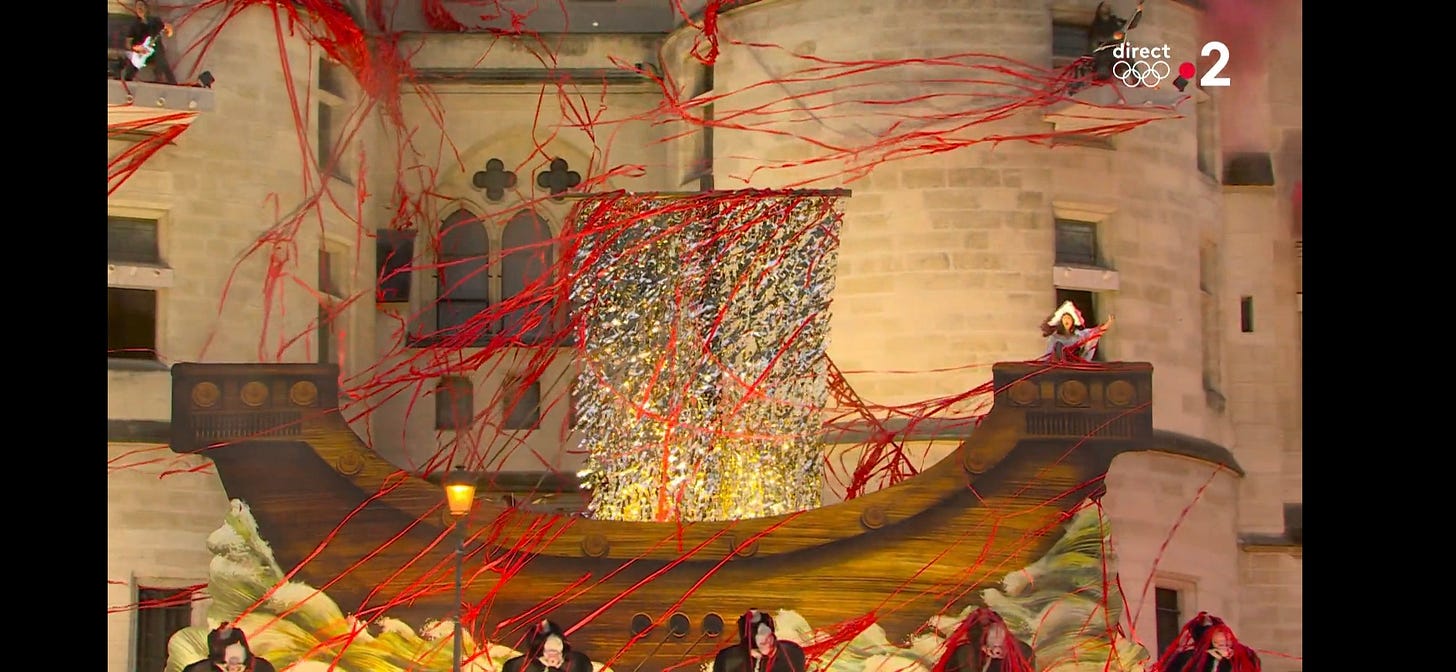
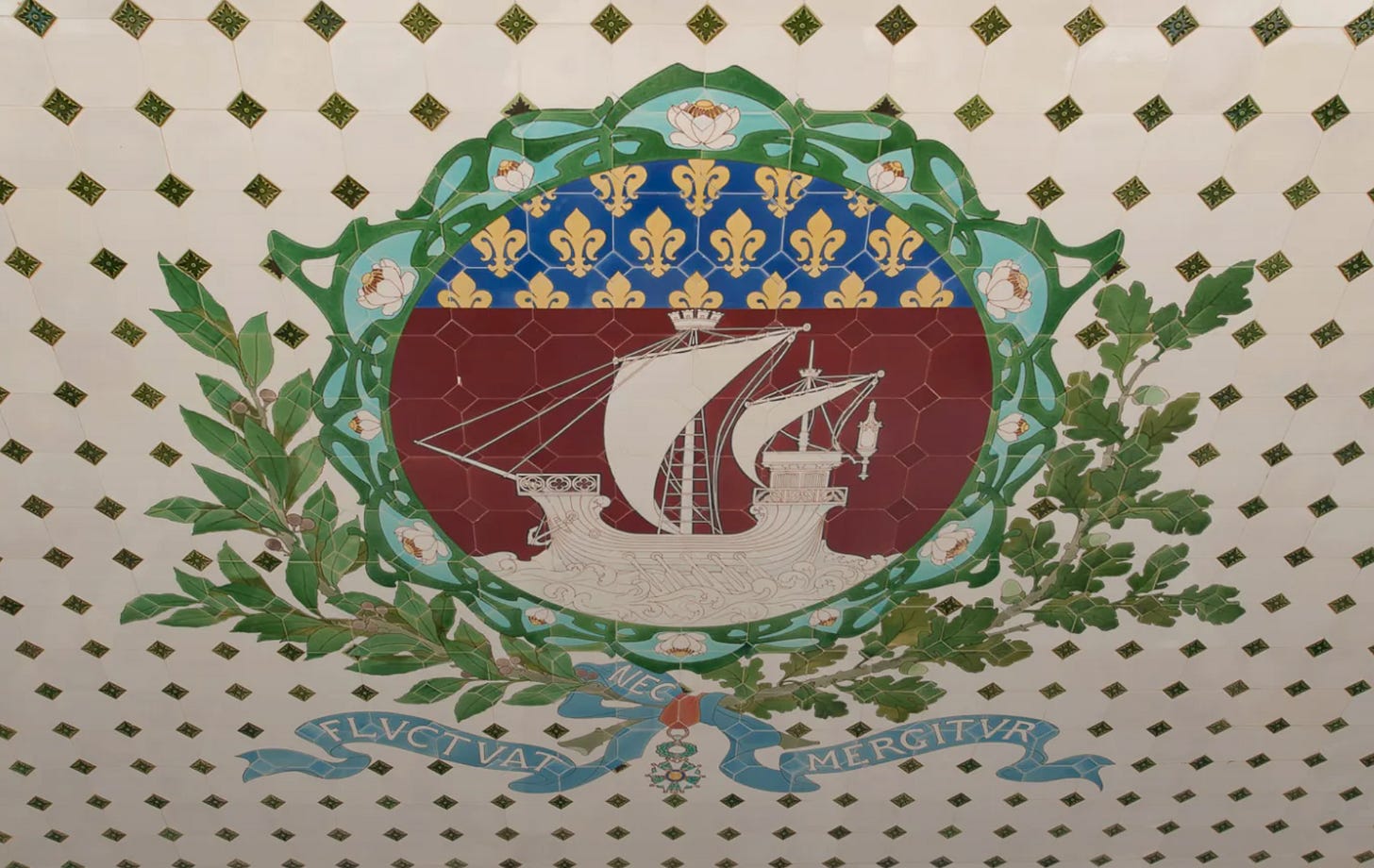
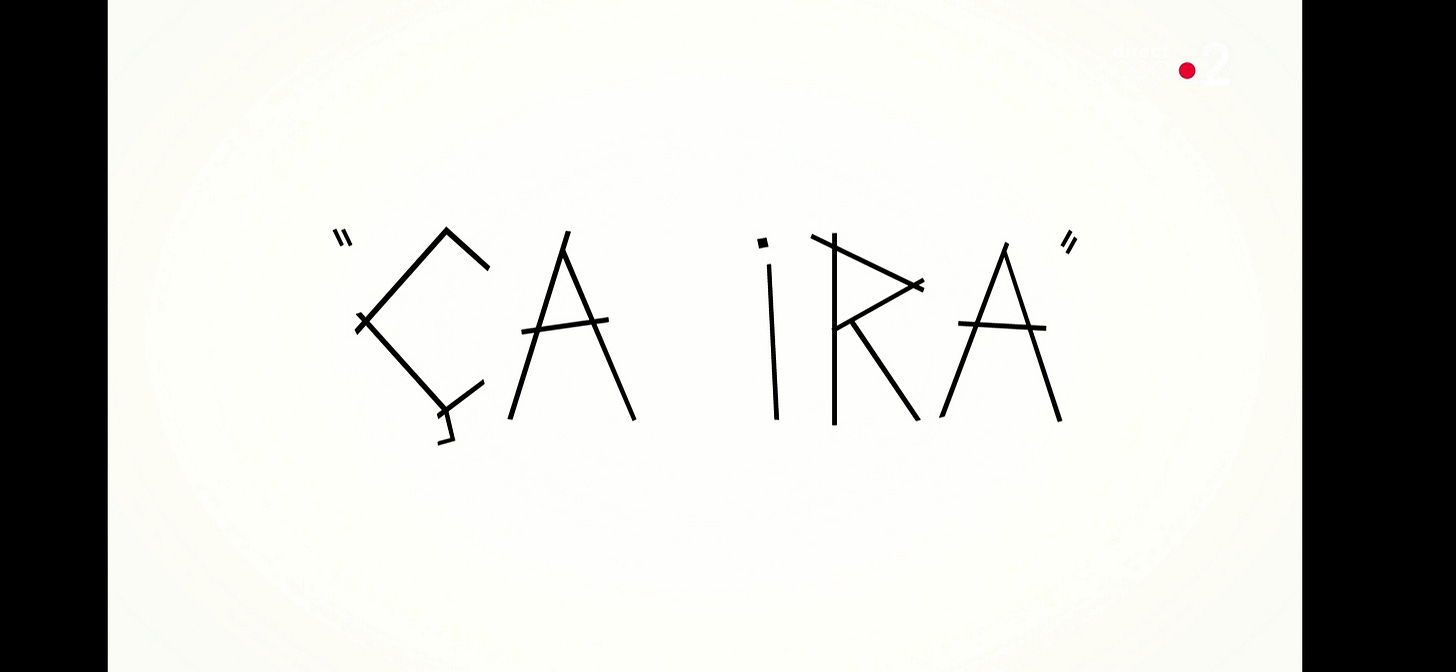





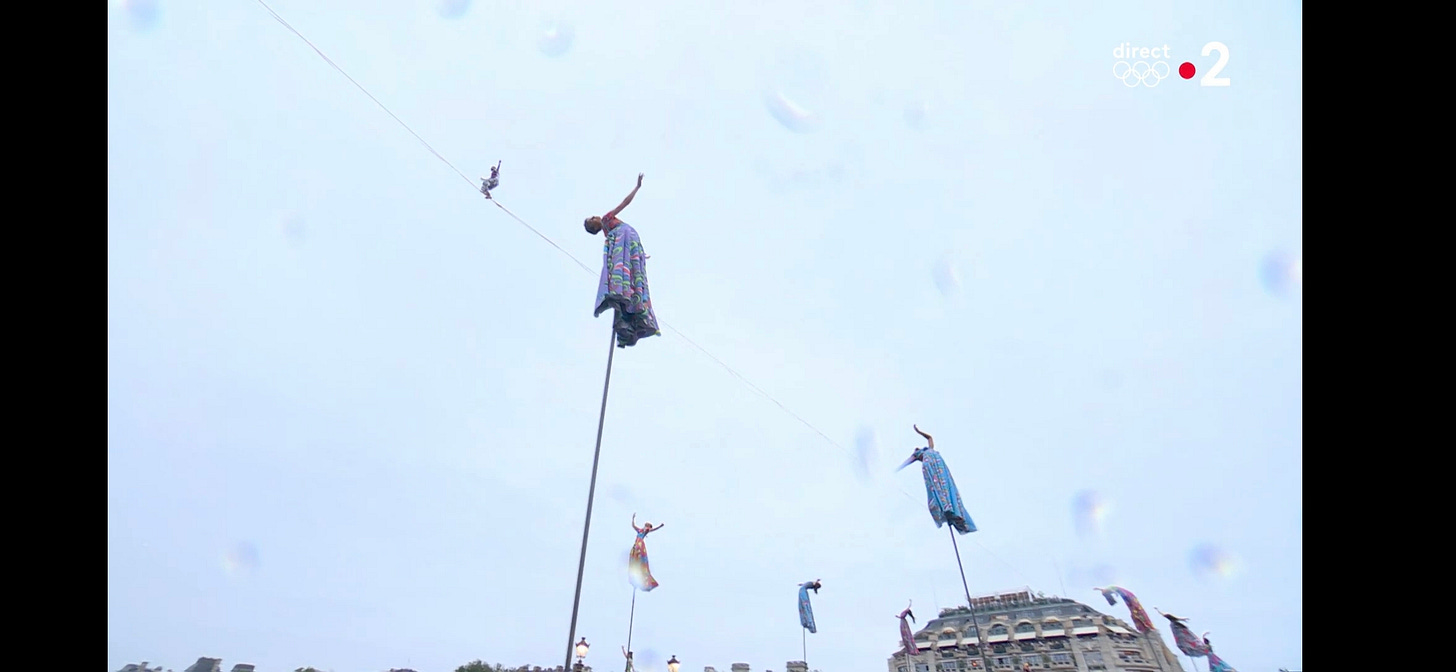
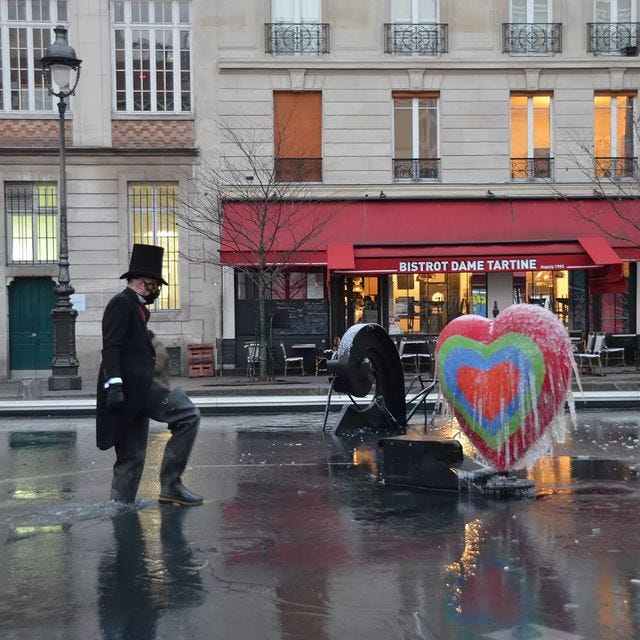
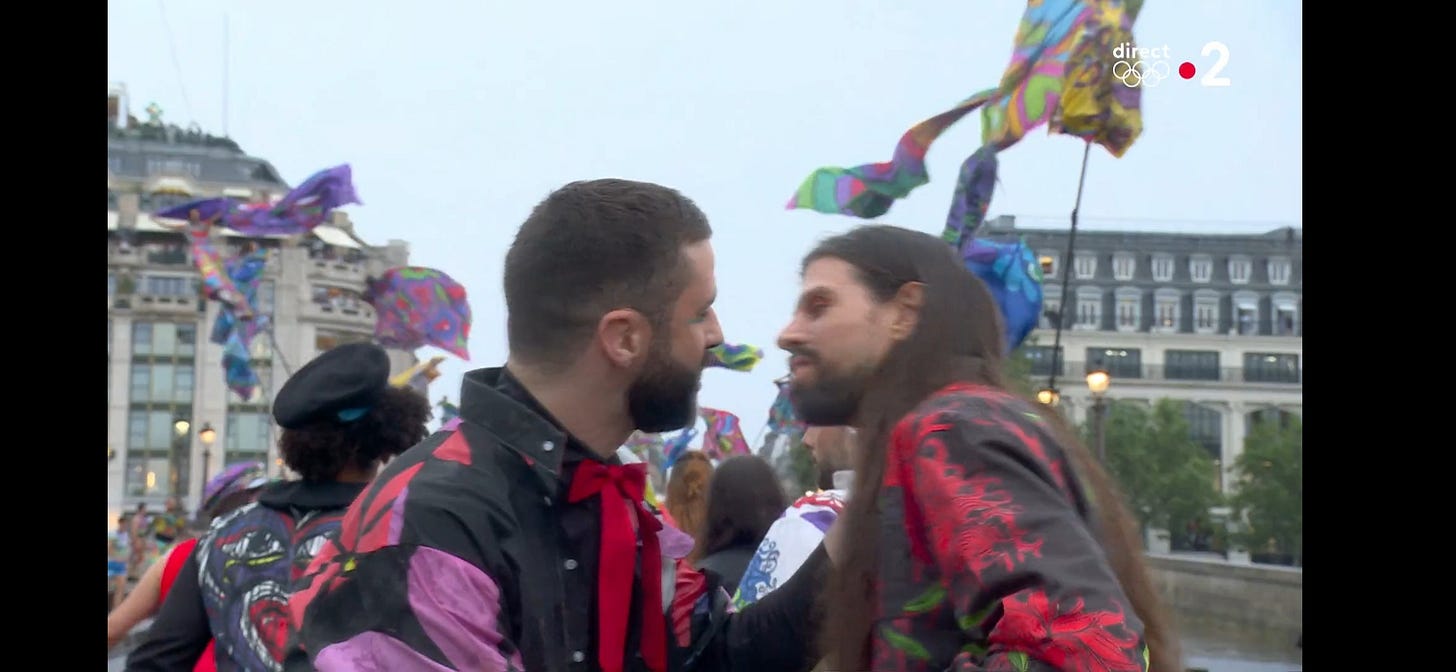
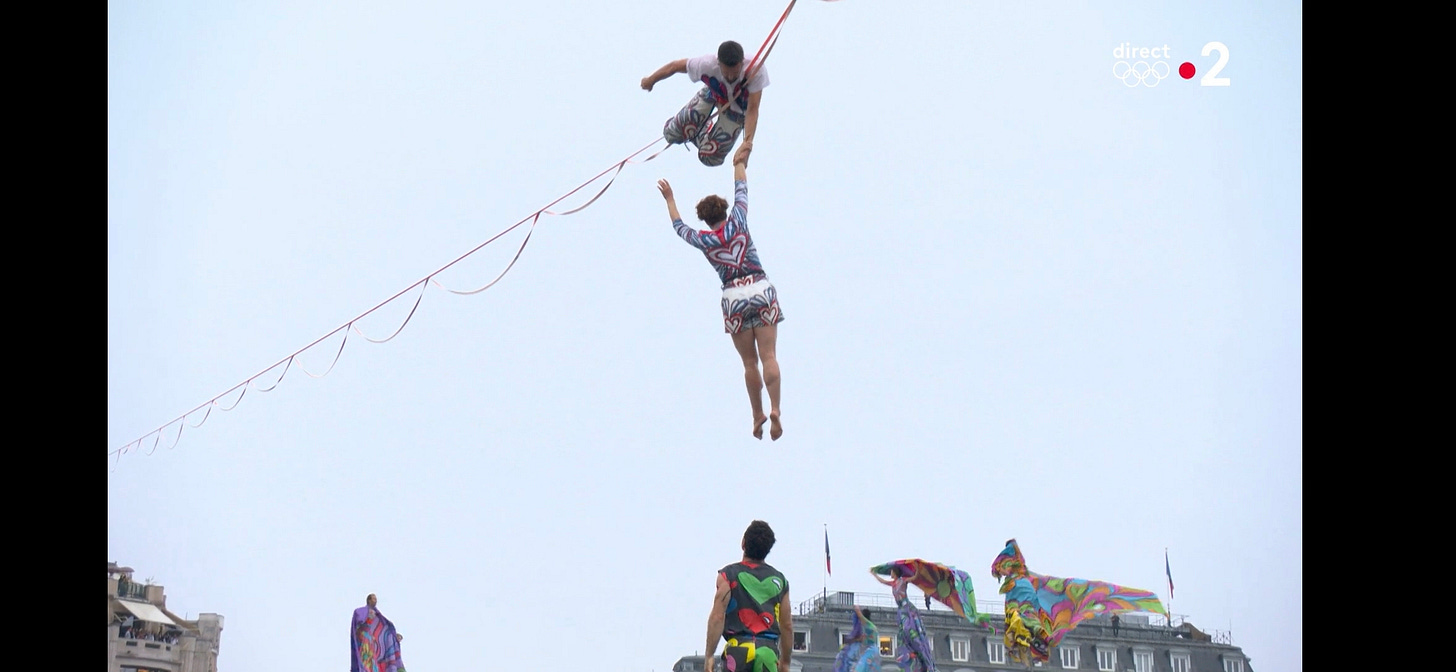
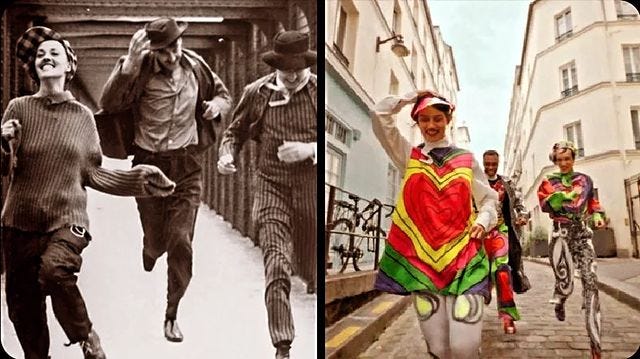
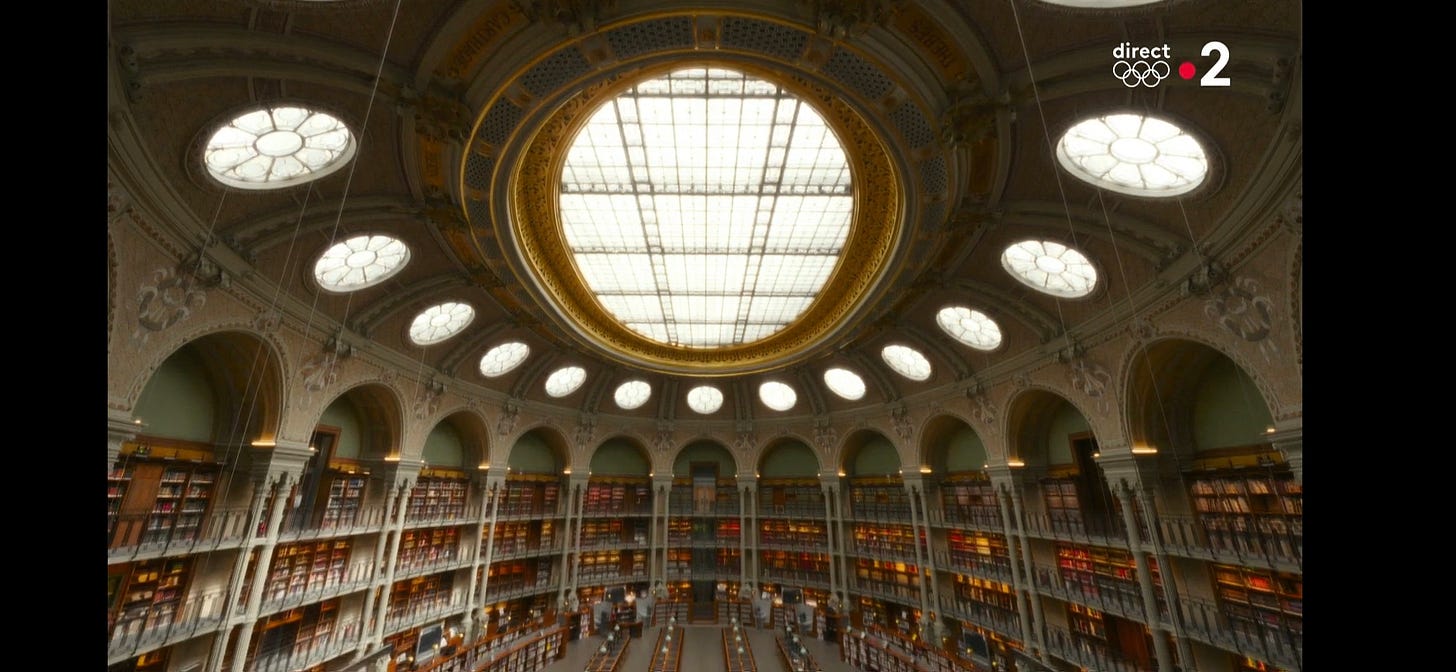


You did such an amazing work here! I'm loving this series, bravo!
Thank you so much! Understanding history and culture is so important! Otherwise how can we understand the people or the county.
Your 3 part commentary is an excellent introduction to - how to better understand France beyond the cliché.
Welcome to MyFrenchLife Magazine. This is what we strive to do each day!!!!
Bienvenue !
Judy